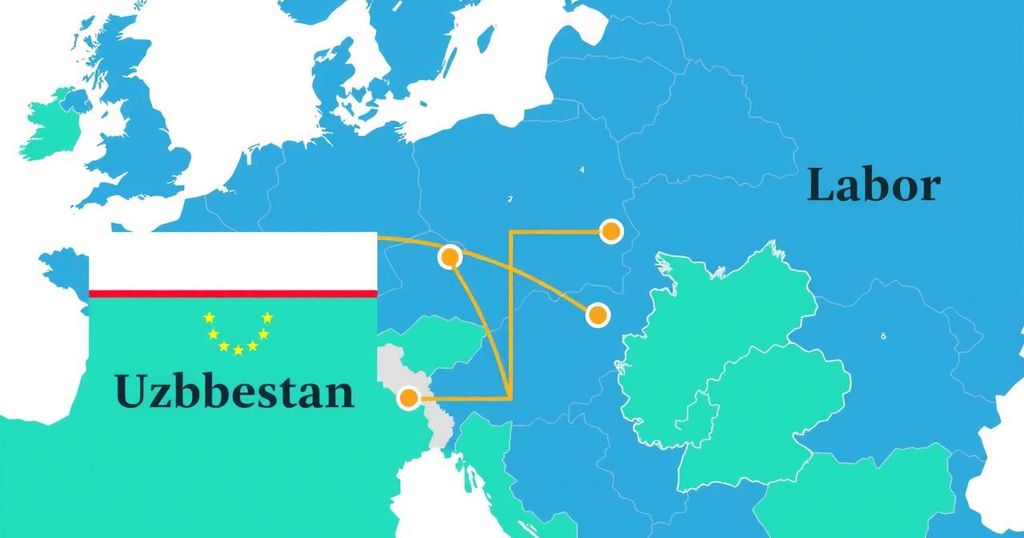India’s Economic Outlook Amidst U.S. Tariff Crisis
In the face of U.S. tariff-induced market disruptions, India’s economic outlook remains cautiously optimistic. Goldman Sachs reports that despite challenges, India might achieve a GDP growth of approximately 6.3%-6.8% for FY26. Key factors include a lower reliance on exports and potential domestic demand growth, though tariff impacts on various sectors have varied outcomes. The government is also focusing on negotiating a Bilateral Trade Agreement to relieve tariffs.
The Sensex and Nifty indices are experiencing severe downturns due to market chaos initiated by tariff announcements from the United States. President Trump remains firm on his tariff policies, indicating little chance for negotiation, as he perceives them as necessary measures to remedy trade imbalances with other nations.
Despite these challenges that may impact India’s GDP growth, Goldman Sachs posits that India has likely surpassed its most critical economic slowdowns. The firm suggests that as long as oil prices remain low, India could still reach its projected GDP growth of 6.3%-6.8% for the fiscal year 2025-26. A government official noted that the fiscal impacts of the tariffs will not significantly burden India’s economic framework, as it has made budgetary provisions to aid exporters.
Moreover, India’s relatively low dependence on exports may mitigate the effects of the tariffs. Reportedly, India’s GDP is expected to grow around 6.6% in FY26 due to anticipated domestic demand spurred by income tax relief and decreasing inflation. Economists argue that unlike East Asian nations that rely heavily on exports, India’s economic expansion is primarily driven by domestic consumption.
The implications of the tariff initiatives may differ broadly across diverse sectors within India. While some sectors such as electrical machinery and textiles may benefit from aspects of the tariffs, others including IT services might face significant challenges as U.S. clients reduce spending due to economic strain. Certain sectors, like pharmaceuticals, remain unaffected by the retaliatory tariffs, which provides some relief.
Despite the pressures from the U.S. tariffs, there exists potential for India to advance amidst changing global trade dynamics. Analysts foresee that the shifting global supply chains might favor India, particularly due to its strategic relationship with the United States and comparatively lower tariffs than its competitors. Nomura highlights that India could leverage these transitions favorably in the upcoming months.
Countrywide industries, such as the dairy sector, anticipate opportunities for growth as U.S. tariffs may redirect import markets toward Indian products. Furthermore, Indian toy manufacturers are positioning themselves to benefit from the rising costs imposed on competitors, particularly China.
The demand for India’s manufacturing and warehousing sectors is expected to grow as global manufacturers seek alternative production hubs. Indian companies are encouraged to explore new markets in Europe, Africa, and Latin America to counterbalance the impact of the tariffs from the U.S.
In light of these developments, there is a push for expedited negotiations between India and the U.S. to finalize a Bilateral Trade Agreement. Such a deal could potentially alleviate the burdens of reciprocal tariffs and restore smoother trading relations. Indian officials are aiming for productive dialogue on this front within the coming weeks.
While the tariffs imposed by the United States exacerbate current market instabilities, India’s moderate tariff rates and low export dependency offer a degree of resilience. The potential for growth in domestic demand, alongside the opportunities presented by shifting global trade dynamics, provides a glimmer of hope for India’s economy. The government is taking proactive measures through budget provisions and negotiations for a Bilateral Trade Agreement, which may further enhance its trading prospects.
Original Source: m.economictimes.com








Post Comment